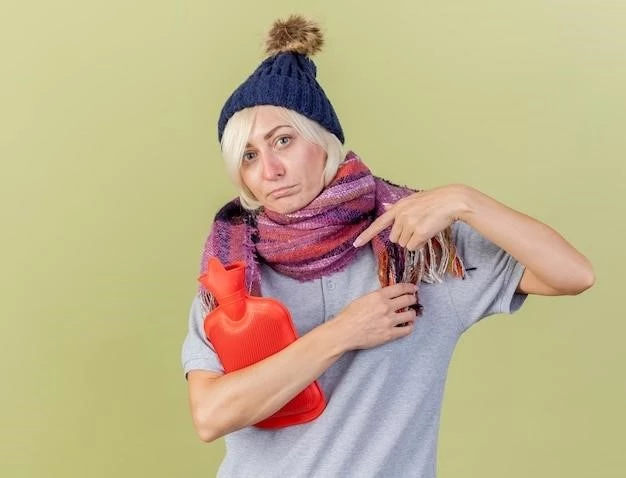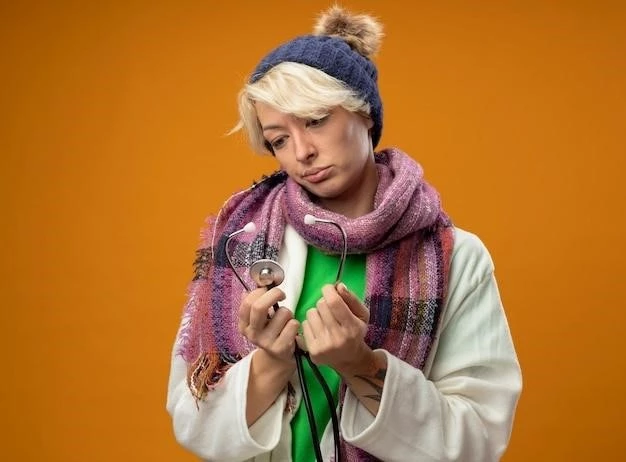Understanding Cold Urticaria
Explore the causes of Cold Urticaria, including exposure to cold air or water, underlying health conditions, and genetics.
Learn about the common symptoms of Cold Urticaria like hives, itching, swelling, and in severe cases, anaphylaxis.
Discover various treatment options such as antihistamines, avoiding cold temperatures, and carrying an EpiPen for emergencies.
Find effective prevention tips like wearing warm clothing, gradually exposing yourself to the cold, and staying hydrated.
Understand how Cold Urticaria affects children, the importance of early diagnosis, and management strategies tailored for kids.

Get insights into how exercise can trigger or alleviate Cold Urticaria symptoms and safe workout practices to consider.
Learn the distinctions between Cold Urticaria and allergic reactions, their triggers, and diagnostic approaches.
Discover ways to manage flare-ups, including applying warm compresses, taking prescribed medications, and seeking medical help when needed.
Causes of Cold Urticaria
Causes of Cold Urticaria can vary from individual to individual. Exposure to cold air or water is a common trigger, leading to the release of histamine. Underlying health conditions like viral infections, hepatitis, or certain medications can also play a role. Genetic factors may contribute to the development of Cold Urticaria, making some people more susceptible than others. It’s essential to identify your specific triggers and work with a healthcare provider to manage the condition effectively. Avoiding sudden temperature changes, protecting your skin from cold exposure, and staying informed about potential risk factors can help you better navigate Cold Urticaria.
Symptoms of Cold Urticaria
Symptoms of Cold Urticaria typically manifest as red, itchy hives on the skin shortly after exposure to cold temperatures. You might experience swelling, a burning sensation, or a feeling of coldness in the affected areas. In severe cases, cold-induced hives can lead to anaphylaxis, a serious allergic reaction that requires immediate medical attention. Other symptoms may include fatigue, headache, or a drop in body temperature. It’s crucial to recognize these signs and seek medical help if you suspect you have Cold Urticaria. By understanding the symptoms, you can effectively manage the condition and prevent complications.
Treatment Options for Cold Urticaria
When it comes to treating Cold Urticaria, various options can help alleviate symptoms and improve your overall quality of life. Antihistamines are commonly prescribed to reduce itching and hives triggered by cold exposure. In cases of severe reactions, carrying an epinephrine auto-injector (EpiPen) is crucial for emergency use. Avoiding cold temperatures, wearing warm clothing, and using barrier creams can also help minimize flare-ups. Additionally, desensitization therapy under medical supervision may be recommended for some individuals. It’s essential to consult with a healthcare provider to determine the best treatment plan tailored to your specific needs.
Prevention Tips for Cold Urticaria
Preventing Cold Urticaria flare-ups involves adopting strategies to minimize exposure to cold temperatures and reduce the risk of triggering an allergic reaction. Wearing warm, layered clothing can help insulate your body and protect your skin. Gradually exposing yourself to cold conditions can also help your body adapt over time. Staying well-hydrated and maintaining good overall health can support your immune system and potentially reduce the severity of symptoms. It’s important to be proactive in avoiding sudden temperature changes and to always have emergency medications like antihistamines or an EpiPen on hand in case of severe reactions. By implementing these preventive measures, you can better manage Cold Urticaria and enjoy a more comfortable daily life.
Cold Urticaria in Children
Understanding Cold Urticaria in children is essential for early detection and appropriate management. Kids with Cold Urticaria may experience symptoms like hives, itching, or swelling after exposure to cold environments. It’s crucial for parents and caregivers to monitor these reactions and seek medical advice for proper diagnosis and treatment. Children should be dressed warmly in cold weather and taught to recognize their triggers to prevent flare-ups. Consult a pediatrician or allergist to create a tailored action plan for your child’s Cold Urticaria, ensuring their safety and well-being while navigating this condition.
Cold Urticaria and Exercise
For individuals with Cold Urticaria, incorporating exercise into your routine requires caution and awareness of potential triggers. Cold-induced hives during physical activity can be managed by warming up indoors, dressing in layers, and avoiding extreme temperatures. Choosing indoor exercises or engaging in physical activities during warmer hours can help minimize the risk of flare-ups. It’s important to listen to your body, communicate any symptoms to a healthcare provider, and carry necessary medications while exercising. By being mindful of your condition and implementing proper precautions, you can stay active while effectively managing Cold Urticaria.
Cold Urticaria vs. Allergic Reactions
Distinguishing between Cold Urticaria and allergic reactions is crucial for accurate diagnosis and appropriate treatment. While Cold Urticaria is triggered by exposure to cold temperatures, allergic reactions can occur in response to various allergens like food, insect bites, or medications. Allergic reactions typically involve symptoms like itching, rash, swelling, and, in severe cases, anaphylaxis. Cold Urticaria, on the other hand, specifically manifests as hives, itching, and swelling upon cold exposure. Consulting with a healthcare provider, undergoing allergy testing, and keeping a detailed symptom diary can help differentiate between the two conditions and guide your treatment plan effectively.
Managing Cold Urticaria Flare-Ups
Effectively managing Cold Urticaria flare-ups involves a combination of preventive measures and responsive actions. When faced with hives, itching, or swelling due to cold exposure, apply warm compresses to affected areas to alleviate symptoms. Taking prescribed antihistamines can help reduce itching and inflammation. If symptoms persist or worsen, seek medical attention promptly. It’s essential to carry emergency medications like an EpiPen in case of severe reactions. Avoiding known triggers, staying informed about weather conditions, and maintaining a healthy lifestyle can also contribute to minimizing flare-ups. By being proactive and prepared, you can navigate Cold Urticaria flare-ups more confidently and effectively.
Conclusion
In conclusion, understanding Cold Urticaria is essential for effectively managing this condition. By being aware of the causes, symptoms, and treatment options, individuals can navigate Cold Urticaria with greater ease. Prevention tips, especially in children and during exercise, play a vital role in minimizing flare-ups. Distinguishing Cold Urticaria from allergic reactions is paramount for accurate diagnosis and tailored treatment plans. Managing flare-ups requires a combination of proactive measures and responsive actions. With proper care, communication with healthcare providers, and a proactive approach, individuals dealing with Cold Urticaria can lead a comfortable and active lifestyle. Stay informed, stay prepared, and prioritize your well-being when managing Cold Urticaria.
